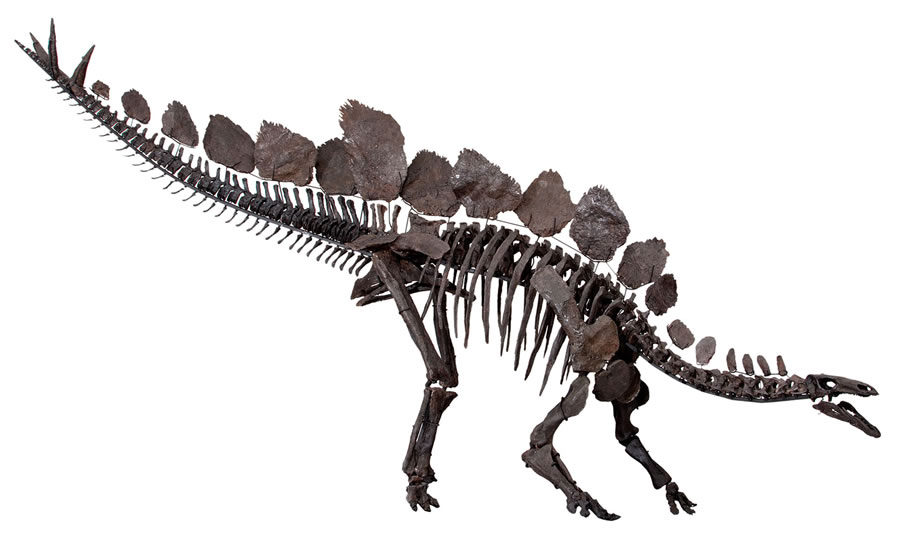
Image Credit: Susannah Maidment, CC BY 4.0 , via https://en.wikipedia.org/wiki/Stegosaurus
Did Stegosaurus have two brains? This question comes from a very old misconception that keeps showing up in articles and books, probably because it sounds too weird to be true but makes an odd sort of sense. After all, when the fact that Stegosaurus’ roughly walnut-sized brain controlled a 4-ton body seems so absurd anyway, a second brain sounds like it would come in handy, right? The short answer to this question, though, is NO. ABSOLUTELY NOT. Stegosaurus had one brain just like any other animal with a spine. The long answer is much more interesting. This myth started back in the 1870s. When famous bone hunter Othniel Charles Marsh described and named Stegosaurus, he speculated that an extra-large space for the spinal cord in Stegosaurus’ hips may have functioned as a second brain that helped coordinate the stride of the animal’s long back legs with its short front legs. The space was so large that a second brain would have dwarfed the “main” brain in the animal’s skull! Marsh and other scientists quickly abandoned the idea because its supporting evidence was so poor—no other features of the hip bones helped confirm it. However, popular media had already latched on to the weird image by then, and so we continue to spread it around today. Modern scientists have yet to explain why Stegosaurs needed more cargo room in the caboose. Attempts to explain it have uncovered similar spaces in both birds and the long-necked sauropod dinosaurs as well, which only deepens the mystery. Scientists will be scientists, though, so they’ve come up with some possible explanations. Some scientists argue that Stegosaurus’ extra trunk space allowed for extra good reflexes in the tail. All land-living vertebrates have a little swelling of the spinal cord to help control the legs—the theory goes that maybe Steggy had a more swollen spine to help it wield its mighty THAGOMIZER, deadliest of dinosaurian defenses! And no, I am not making that term up: it’s an informal term/inside joke for a stegosaur tail, and it comes from a The Far Side cartoon. Though scientists have been able to show that the thagomizer did help defend the animal, they can’t be sure it has anything to do with lumps in the spinal cord. Plus, ankylosaurs had weaponized keisters too, but they apparently lack the swollen spinal space found in not only stegosaurs, but also the long-necked sauropods like Apatosaurus. The other main explanation ignores nerves and claims that an organ called a glycogen body filled that space. Birds have these glycogen bodies, which accounts for the space in their hips, so it’s possible dinosaurs could have them too. Why stegosaurs and sauropods would have glycogen bodies but more birdlike dinosaurs like raptors don’t remains a big problem with this explanation. And since nobody knows what a glycogen body even does, scientists can’t really test this hypothesis. Bottom line (pun intended): we might not have any idea what Stegosaurs kept in their heinies, but it definitely wasn’t an extra brain.
—Jeff Bond
